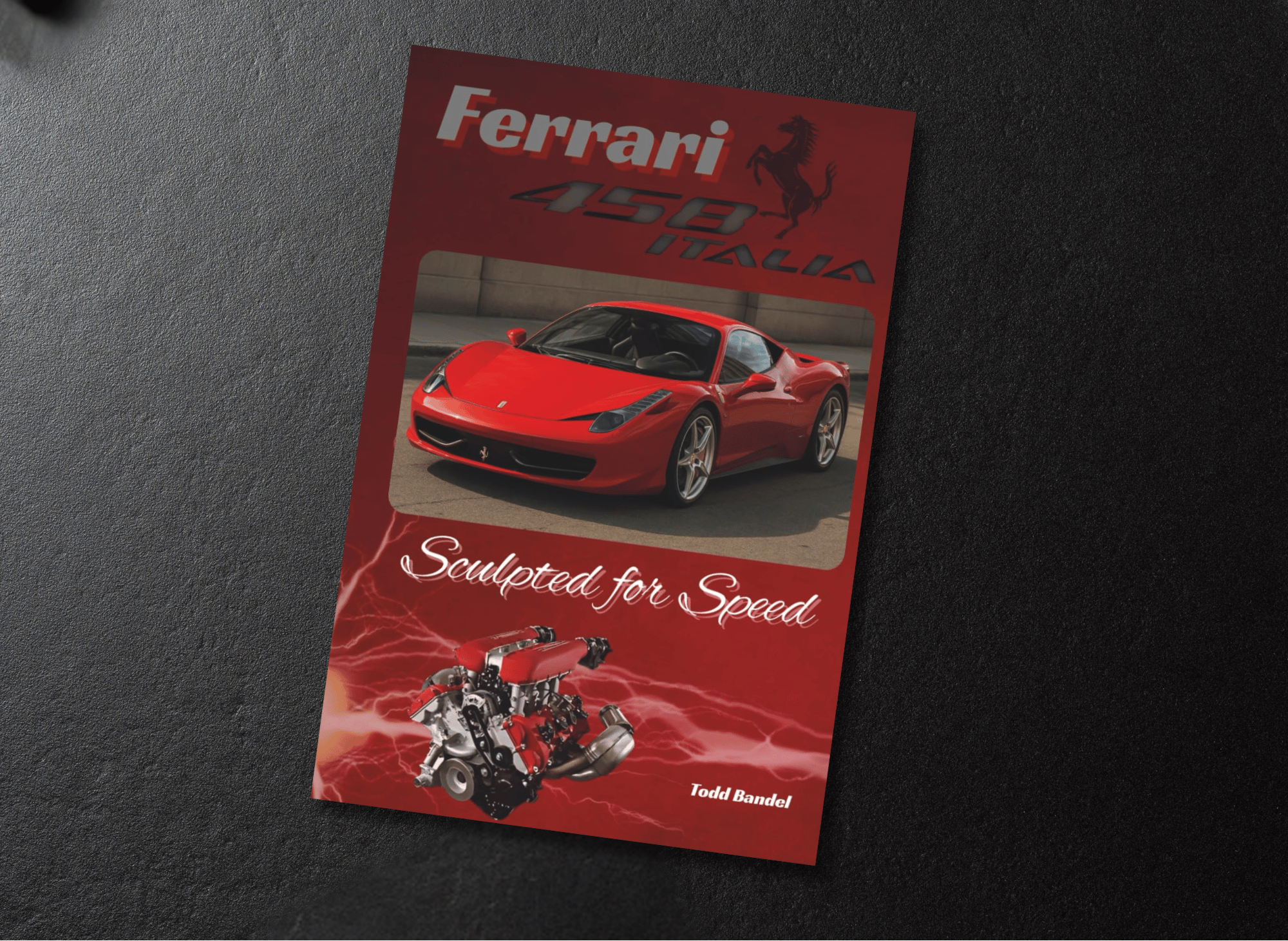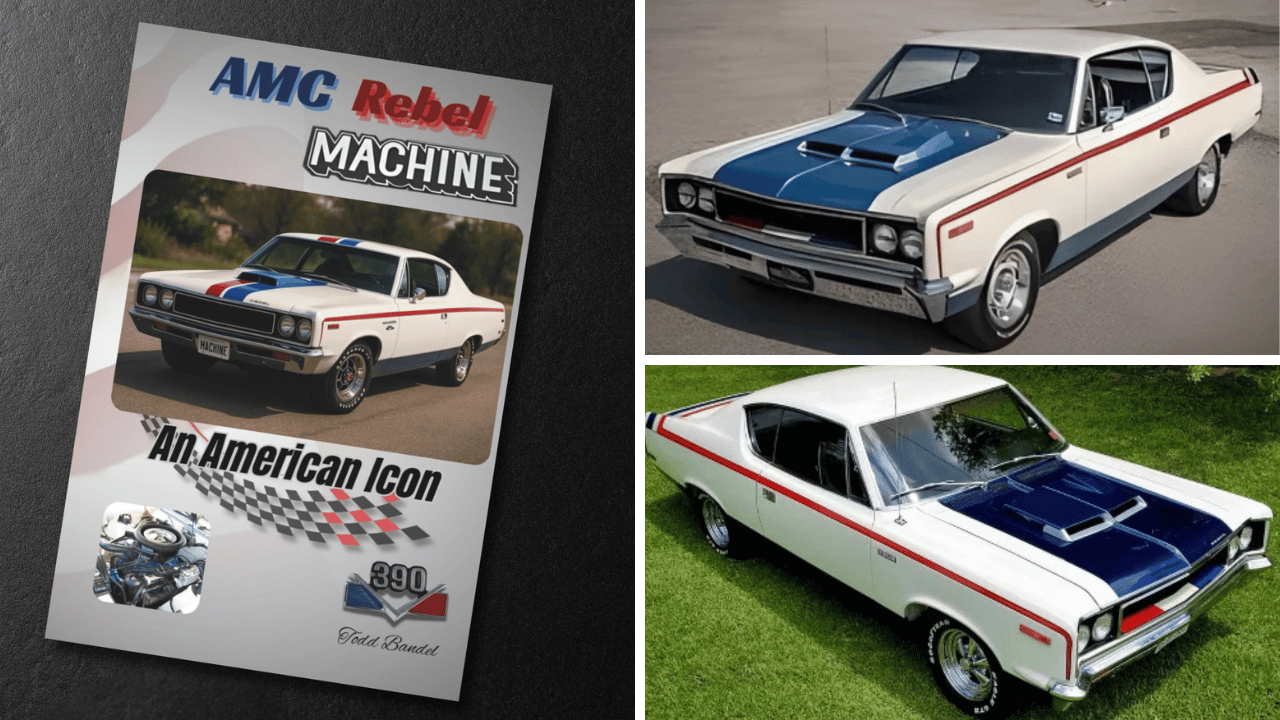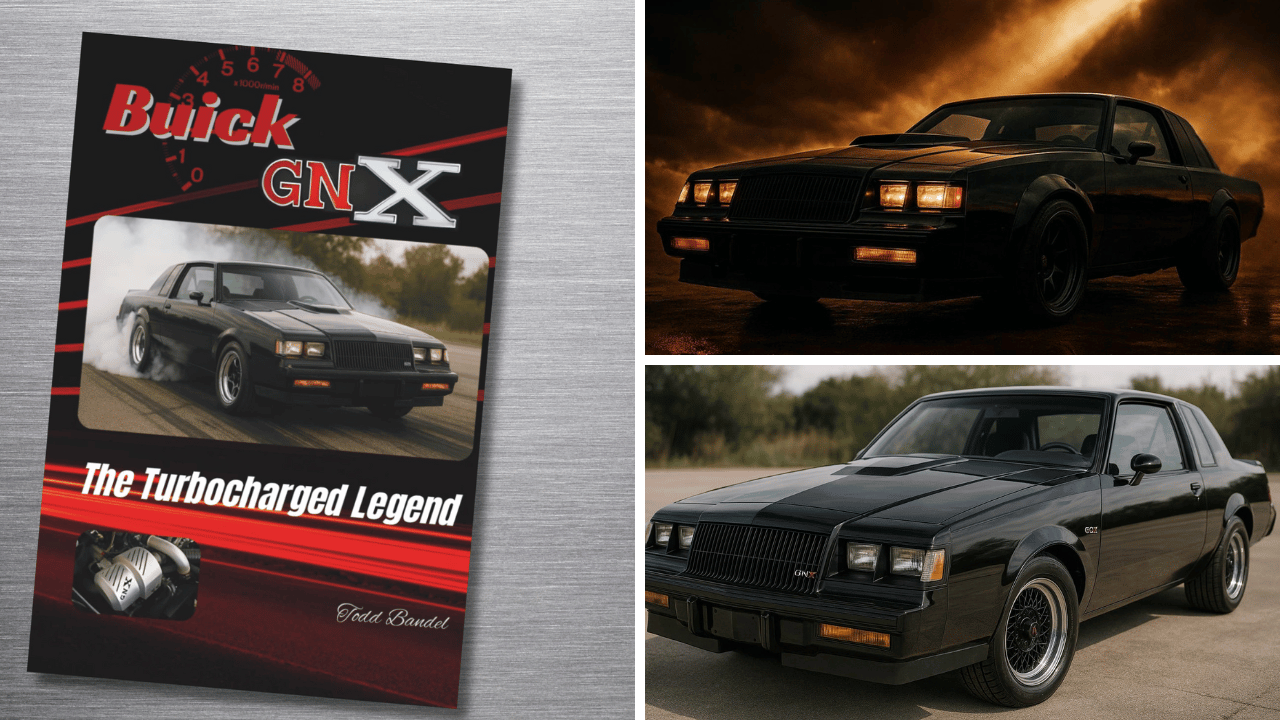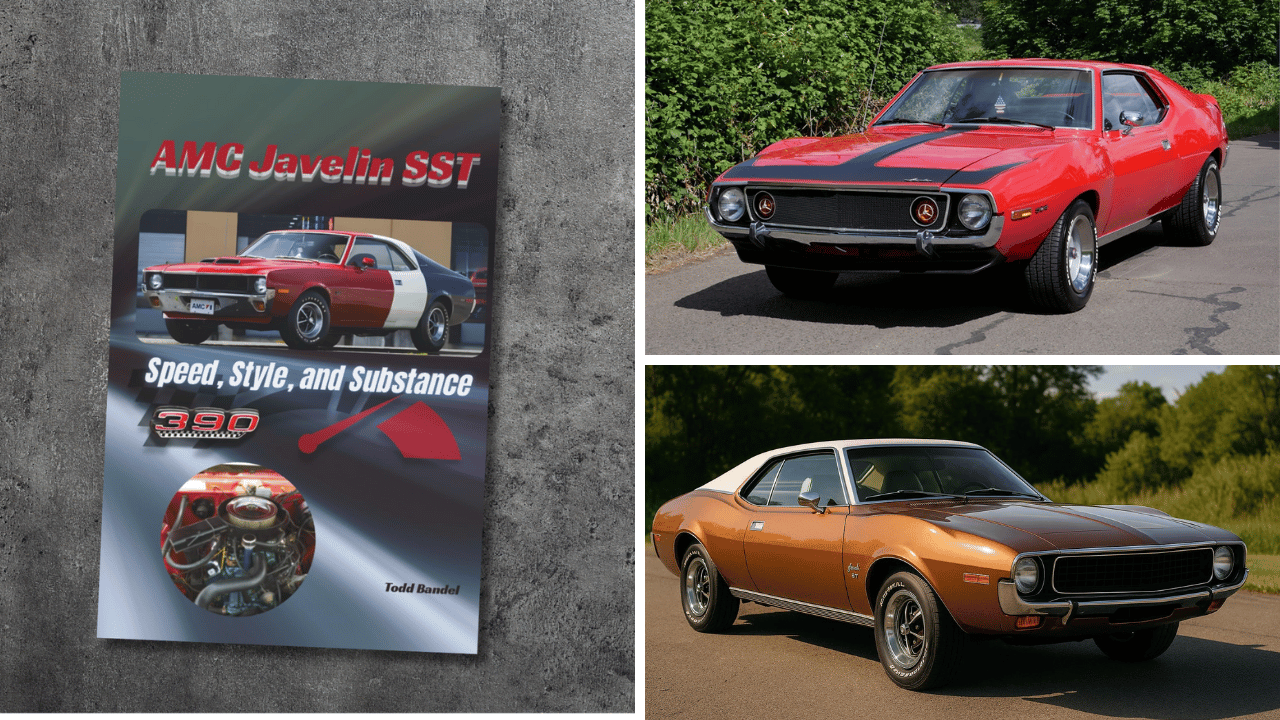Ferrari 458: Sculpted for Speed
Discover why the Ferrari 458 Italia became a supercar legend. From its revolutionary V8 engine to Pininfarina design, explore the complete story.
Welcome to Mechanicaddicts. As an Amazon Associate, we earn from qualifying purchases (at no cost to you) from links found within these pages if you choose to buy something.
The Ferrari 458 Italia debuted in 2009, instantly becoming one of the most celebrated supercars ever created. This mid-engine marvel, the Ferrari 458, represented a quantum leap in Ferrari’s design philosophy, engineering prowess, and technological innovation, from its breathtaking Pininfarina-sculpted bodywork to its groundbreaking naturally aspirated V8 engine.
The 458 established new benchmarks that continue to influence supercar development across the industry. The 458 played a crucial role in shaping Ferrari's modern design language, leaving a lasting impact on Ferrari's legacy and aesthetic direction in the years that followed.
Ferrari’s decision to replace the F430 with the 458 marked a pivotal moment in the company’s storied history. The Maranello-based manufacturer needed to create something extraordinary. This car would not only compete with rivals like the Lamborghini Gallardo and McLaren MP4-12C but also set new standards for what a mid-engine supercar could achieve. The result was a machine, like the Ferrari 458 Spider, that seamlessly blended cutting-edge technology with Ferrari’s racing heritage, creating what many consider the perfect balance of performance and usability.
The 458’s significance extends beyond mere performance statistics. It represented Ferrari’s commitment to naturally aspirated engines at a time when many manufacturers were embracing forced induction. This decision proved prophetic, as the 458 would become the last naturally aspirated V8 Ferrari, boasting impressive fuel consumption metrics, before the company transitioned to turbocharging with the 488 GTB. The 458’s production run from 2009 to 2015 captured the essence of an era, making it increasingly valuable to collectors and enthusiasts who appreciate automotive purity.
What makes the 458 truly special is how it democratized supercar performance while maintaining Ferrari’s exclusive character. Unlike previous generations that required significant skill to extract maximum performance, the 458 Italia offered unprecedented accessibility without compromising its thrilling nature. This achievement, particularly as speed rises, stemmed from revolutionary technologies like the dual-clutch transmission and advanced electronic systems, along with small aeroelastic winglets, that worked seamlessly together.

Ferrari 458: Sculpted for Speed
Unleash the thrill of innovation and legacy with 'Ferrari 458: Sculpted for Speed,” your definitive guide to understanding the artistry and engineering of a legend that redefined automotive history.
Design and Aerodynamics: Pininfarina's Sculpted Perfection
The 458 Italia's design philosophy centered on function following form, with every curve and surface serving both aesthetic and aerodynamic purposes. Pininfarina, Ferrari's longtime design partner, created an entirely new design silhouette that immediately communicated speed and aggression while maintaining elegant proportions that would age gracefully over time.
The front fascia features distinctive winglets integrated into the bumper design, channeling airflow around the car's sides while providing additional downforce. These aerodynamic elements, particularly the radiator intake, weren't merely decorative; wind tunnel testing revealed they contributed significantly to the car's stability at high speeds. The iconic side air intakes, positioned behind the doors, not only feed the hungry V8 engine but also enhance the car's dramatic side profile.
Ferrari's engineers developed an innovative underbody design that creates a venturi effect, accelerating airflow beneath the car to generate substantial downforce without the need for extensive, visible spoilers. This approach, enhanced by small aeroelastic winglets, maintained the 458's clean aesthetic while delivering the aerodynamic performance required for track use. The rear diffuser, seamlessly integrated into the car's tail design, further enhances this effect while providing visual drama.
The 458's aerodynamic efficiency becomes most apparent when compared to its predecessor, the F430. Despite being slightly larger and more powerful, the 458 achieved superior fuel efficiency and reduced wind noise thanks to its refined airflow management. The car's coefficient of drag improved significantly, which contributed to both its performance and everyday usability.
Color choices played a crucial role in the 458's visual impact. Ferrari's traditional Rosso Corsa red remained the most popular choice, but the car also looked equally stunning in other signature colors, such as Giallo Modena yellow or Nero Daytona black. The paint quality itself represented a technological achievement, with multiple layers creating depth and brilliance that enhanced the car's sculptural qualities under varying lighting conditions.

Engine and Performance: The Heart of a Legend
At the core of the Ferrari 458 Italia beats one of the greatest naturally aspirated engines ever created: a 4.5-liter V8 that produces 570 horsepower and 398 lb-ft of torque. This powerplant, designated F136 F by Ferrari, represented the culmination of decades of naturally aspirated engine development, designed to enhance the racing cockpit experience. The engine's flat-plane crankshaft configuration, derived directly from Ferrari's Formula 1 experience, created the distinctive, spine-tingling exhaust note that became the 458's signature.
The engine's performance credentials speak for themselves. The 458 Italia accelerates from 0 to 60 mph in just 3.4 seconds, with a top speed of 202 mph. These figures were remarkable for their time and remain impressive by current standards. More importantly, the engine delivers its power in a linear, progressive manner, balancing performance with noteworthy fuel consumption that makes the car's performance accessible to drivers of varying skill levels.
Ferrari's engineers focused extensively on reducing internal friction and optimizing combustion efficiency. The result was an engine that not only produced exceptional power but also achieved surprising fuel economy for a high-performance naturally aspirated unit. The engine's rev limit of 9,000 RPM encouraged enthusiastic driving, while its broad torque curve ensured strong performance across the entire rev range.
The driving experience in a 458 Italia transcends mere acceleration figures. The engine's response to throttle inputs feels instantaneous, creating an intimate connection between driver and machine that modern turbocharged engines struggle to replicate. This direct relationship, combined with the car's precise steering and balanced chassis, creates a driving experience that many consider the gold standard for mid-engine supercars, showcasing impressive longitudinal acceleration.
Track performance validated the 458's engineering excellence. The car set a Nürburgring lap time of 7:38, placing it among the elite supercars of its era. More importantly, the 458's lap times remained consistent throughout extended track sessions, demonstrating the effectiveness of the cooling system and the engine's durability under extreme conditions, especially at high speeds.

Technological Innovations: Pioneering the Future
The Ferrari 458 Italia introduced several groundbreaking technologies that would influence not only future Ferrari models but the entire automotive industry. The most significant innovation was Ferrari's introduction of the first dual-clutch transmission, which established the 458 as a modern classic. This eliminated the traditional manual gearbox and torque converter automatic in favor of lightning-fast gear changes that enhanced both performance and driving pleasure.
This seven-speed dual-clutch system, developed in partnership with Getrag, delivered gear changes in just 150 milliseconds, faster than any human could achieve with a manual transmission. The system offered multiple driving modes, ranging from smooth, automatic operation suitable for city driving to aggressive, track-focused settings that maximized performance. The technology was so successful that Ferrari has never returned to manual transmissions for their mid-engine supercars.
The electronic differential (E-Diff) represented another significant technological advancement. This system continuously monitors wheel speeds, steering inputs, and throttle position to optimize traction and handling. Unlike traditional limited-slip differentials that operate mechanically, the E-Diff uses electronic control to provide precisely the right amount of torque distribution for any driving situation.
Ferrari's magnetic suspension system, borrowed from Formula 1 technology, allowed the 458 to achieve a seemingly impossible combination of ride comfort and handling precision. The system utilizes a magnetorheological fluid in the shock absorbers, which changes viscosity when subjected to magnetic fields, thereby enhancing stability, especially near the front grille area. This allows the suspension to adapt instantly to road conditions and driving demands.
The braking system showcased Ferrari's partnership with Brembo, featuring carbon-ceramic discs as standard equipment. These brakes provided exceptional stopping power with minimal fade, even during extended track use. The system's pedal feel and modulation set new benchmarks for supercar braking performance.
Advanced traction control and stability systems worked invisibly to enhance safety without compromising the driving experience. These systems were calibrated to allow experienced drivers to explore the car's limits while providing a safety net for less experienced operators at any reputable dealer. The integration of these technologies created a vehicle that was simultaneously more capable and more accessible than any Ferrari had been before.

Model Variations and Special Editions: A Family of Excellence
The Ferrari 458 family expanded beyond the original Italia to include several variations, each targeting different aspects of the supercar experience. The 458 Spider, launched in 2011, addressed the growing demand for open-top motoring without compromising the car’s performance credentials, which were meticulously developed.
The Spider’s retractable hardtop, a masterpiece of engineering in itself, could deploy or retract in just 14 seconds. Unlike soft-top convertibles, the hardtop provided excellent weather protection and security while maintaining the car’s sleek profile when closed. The roof mechanism added approximately 110 pounds to the car’s weight, but Ferrari’s engineers compensated by strengthening the chassis to maintain the coupé's structural rigidity.
Performance differences between the Italia and Spider remained minimal. The Spider achieved 0-60 mph in 3.4 seconds, identical to the coupe, while the top speed dropped only slightly to 198 mph. More importantly, the Spider retained the Italia’s exceptional handling characteristics, proving that open-top motoring didn’t require significant performance compromises.
The 458 Speciale, introduced in 2013, represented the ultimate expression of the 458 platform. This track-focused variant produced 605 horsepower from a revised version of the 4.5-liter V8, while extensive weight reduction measures stripped 100 pounds from the standard car. Aerodynamic modifications, including active aerodynamic elements, generated additional downforce, improving track performance.
The Speciale’s active aerodynamics system, featuring moveable flaps in the front splitter, represented cutting-edge technology adapted from Ferrari’s Formula 1 program. These elements automatically adjusted based on driving conditions to optimize either straight-line speed or cornering performance. Both the 458 Speciale and the open-top Speciale feature unique characteristics such as increased power, advanced aerodynamics, and exclusivity, distinguishing them from other 458 variants.
The 458 Challenge, designed exclusively for Ferrari’s one-make racing series, pushed the platform’s performance even further. This track-only variant featured more aggressive aerodynamics, a stripped interior, and suspension modifications that made it unsuitable for road use but devastatingly effective on the racetrack.
Each variant maintained the core characteristics that made the 458 special while targeting specific use cases. This approach enabled Ferrari to cater to different market segments without diluting the model’s fundamental appeal or compromising its technological advancements.
Racing and Competition: Born for the Track
From its inception, the Ferrari 458 Italia was engineered with the racetrack in mind, embodying Ferrari’s relentless pursuit of performance and precision. The car’s aerodynamic efficiency, honed through countless hours in the wind tunnel, enables it to slice through the air with minimal drag while maximizing downforce, a crucial trait for any serious racing machine. This focus on aerodynamics, particularly as speed rises, combined with the 458’s potent engine and lightning-fast dual-clutch transmission system, makes it a formidable competitor in any motorsport arena.
The 458 Challenge, a dedicated racing variant of the Italia, takes these attributes to the next level. Ferrari’s engineers equipped the Challenge with a recalibrated engine for even sharper throttle response, a racing-inspired suspension system for superior grip and agility, and a bespoke aerodynamic package designed to keep the car glued to the tarmac at high speeds. The result is a vehicle that delivers exhilarating longitudinal acceleration and razor-sharp handling, allowing drivers to push the limits with confidence.
On the track, the 458 Challenge has proven its mettle in prestigious series such as the Ferrari Challenge and the FIA GT3 European Championship. Its advanced features, such as the race-tuned transmission, enhanced braking system, and optimized torque distribution, combine to deliver a driving experience that is both visceral and controlled. Whether in the hands of seasoned professionals or passionate amateurs, the Ferrari 458 Italia and its racing derivatives continue to set benchmarks for performance, reliability, and excitement in the world of motorsport.

Awards and Recognition: Accolades of a Masterpiece
The Ferrari 458 Italia’s trophy cabinet is as impressive as its performance on the road and track. Garnering global acclaim, the 458 Italia has been the recipient of numerous prestigious awards, including the coveted “Car of the Year” title from Top Gear magazine. Industry experts and automotive journalists have consistently praised the car for its breathtaking speed, precise handling, and innovative engineering.
What truly sets the 458 Italia apart is its harmonious blend of aerodynamic efficiency, advanced torque distribution, and a high-revving engine that delivers both power and finesse. The car’s sophisticated transmission system and seamless gear changes have been recognized as industry-leading, earning accolades for their contribution to the 458’s dynamic character. Its ability to combine raw performance with everyday usability has made it a standout in the supercar segment.
Beyond its performance credentials, the 458 Italia has been celebrated for its groundbreaking design and technical achievements. Awards for its aerodynamic innovations, engine design, and overall system integration underscore Ferrari’s commitment to pushing the boundaries of automotive engineering. The 458’s legacy is further cemented by its recognition as a benchmark for future generations of high-performance cars, making it a true icon in the world of automotive excellence.
Collectibility and Investment: The 458’s Enduring Value
As the years pass, the Ferrari 458 Italia’s reputation as a modern classic only grows stronger. With its limited production run and status as the last naturally aspirated V8 Ferrari, the 458 has garnered numerous awards, making it a highly coveted asset among collectors and enthusiasts alike, who often find themselves on the lookout for a sale. Its enduring value is driven not just by exclusivity, but by a combination of cutting-edge features and timeless design.
The 458 Italia’s forged wheels, paired with its advanced suspension system and high-performance brakes, ensure that it remains a valid driver’s car, offering unparalleled control and confidence whether on winding roads or the racetrack. The car’s meticulously engineered chassis and responsive handling make every drive an event, reinforcing its appeal to those who value both performance and precision.
For investors, the 458 Italia represents more than just a car; it is a piece of automotive history. Its collectibility is bolstered by Ferrari’s legendary craftsmanship and the vehicle’s role in marking the end of an era for naturally aspirated engines. As the demand for searches continues to outpace supply, values for well-maintained examples have shown steady appreciation, making the 458 a wise addition to any collection. With its blend of beauty, performance, and exclusivity, the Ferrari 458 Italia stands as a testament to the enduring allure of the prancing horse.

Legacy and Impact: Shaping Tomorrow's Supercars
The Ferrari 458 Italia's influence on subsequent automotive development is undeniable. Its success validated several technological approaches that have since become industry standards. At the same time, its design language continues to influence what many refer to as modern classics in supercar aesthetics, blending function and form to slice through the air.
The car's dual-clutch transmission technology has been widely adopted across the automotive industry. From Porsche's PDK to Lamborghini's ISR systems, the rapid-fire gear changes pioneered by the 458 have become expected features in high-performance vehicles. The technology has even filtered down to mainstream performance cars, demonstrating the 458's role in advancing automotive technology.
Ferrari's approach to integrating electronic systems in the 458 established a template for modern supercar development. The seamless interaction between the car's various electronic systems, traction control, stability management, suspension control, and differential management created a cohesive driving experience that enhanced rather than hindered driver engagement.
The 458's design philosophy influenced an entire generation of supercars. Its emphasis on functional aerodynamics, integrated into an entirely new design of beautiful bodywork, has been emulated by manufacturers across the Supercar industry. The car's proportions and surface treatment continue to be referenced in contemporary supercar design.
Market values reflect the 458's lasting significance. Well-maintained examples, particularly special editions like the Speciale, have appreciated significantly since production ended. This trend reflects not only the car's desirability but also its recognition as the last naturally aspirated V8 Ferrari, making it highly sought after for sale.
The 458's impact extends beyond the automotive world into popular culture. The car has appeared in numerous films, video games, and automotive documentaries, cementing its status as a cultural icon. Its distinctive exhaust note and dramatic styling have made it one of the most recognizable supercars ever created.
Future Ferrari models continue to draw inspiration from the 458's design and engineering principles. The 488 GTB, while turbocharged, maintained many of the 458's technological innovations and design cues. Even Ferrari's latest models, including the F8 Tributo and Roma, show clear evolutionary connections to the 458's foundational principles.

Related Works: Expanding Your Knowledge
Several excellent publications provide deeper insights into the Ferrari 458's development and significance. "Ferrari 458: Sculpted for Speed" by Todd Bandel offers a comprehensive examination of the car's design philosophy and technological innovations. This detailed analysis examines how Ferrari's engineers struck a balance between performance, usability, and aesthetic appeal to craft their masterpiece.
"Ferrari Formula 1 Car by Car: Every Race Car Since 1950" by Stuart Codling offers valuable context for understanding how Ferrari's racing heritage influenced the development of the 458. The book traces the technological transfer from Ferrari's Formula 1 program to their road cars, explaining how innovations like the flat-plane crankshaft and magnetic suspension systems made their way into the 458.
"Italian Supercars: Ferrari, Lamborghini, Maserati" by Paul Mason offers a broader perspective on the 458's place within the Italian supercar landscape. This comparative analysis helps readers understand how the 458 compared to its contemporaries and influenced the broader supercar market.
These publications, combined with period road tests from automotive magazines, provide comprehensive coverage of the 458's development, performance characteristics, and cultural impact. They offer insights from the engineers, designers, and journalists who witnessed the car's creation and early years.

A Lasting Legacy of Excellence
The Ferrari 458 Italia stands as a testament to what happens when engineering excellence meets aesthetic perfection. Its six-year production run captured lightning in a bottle, a moment when naturally aspirated engines reached their peak, when electronic systems enhanced rather than replaced driver skill, and when beautiful design served functional purposes.
The 458's significance extends beyond its impressive performance statistics and technological innovations. It represents a philosophy of automotive development that prioritizes the complete driving experience over individual metrics. This holistic approach created a car that remains relevant and desirable years after production ended, proving that great automotive design and engineering settings are truly timeless.
For current owners, the 458 represents not just transportation, but also participation in automotive history and potential resale value. For enthusiasts who have yet to experience one, visiting a dealer offering the 458 offers a glimpse into what made the early 2010s a golden age for supercars. The car's combination of accessibility and excitement ensures that driving a 458 remains a bucket-list experience for automotive enthusiasts.
The 458's influence continues to shape modern supercar development, ensuring its legacy will persist long into the future. As the automotive industry transitions toward electrification, the 458 serves as a reminder of what naturally aspirated engines can achieve when pushed to their absolute limits in various driving settings.
The Ferrari 458 Spider Exhibits Exceptional Aerodynamic Efficiency, From Its Body Design and Extending to the Precision-Engineered Engine Cover.
The Ferrari 458 Spider is a masterpiece of engineering and design, blending breathtaking performance with unparalleled style. Beneath its sleek bonnet, the 458 Spider is equipped with a high-revving V8 engine that delivers exceptional longitudinal acceleration, propelling the car from 0 to 60 mph in record time. The pistons within this finely tuned engine work in perfect harmony, ensuring every ounce of power is utilized efficiently. To further enhance its performance, the engine cover has been redesigned to improve cooling and airflow, thereby contributing to the car's overall aerodynamic efficiency.
One of the standout features of the Ferrari 458 Spider is its lightweight forged wheels, which not only reduce unsprung mass but also help to cut drag and improve handling. These wheels, combined with the car's advanced suspension system and ABS, ensure that the Spider remains planted on the road, even during aggressive cornering. The car's combined cycle fuel efficiency is a testament to Ferrari's commitment to striking a balance between performance and environmental responsibility, making it a marvel of modern automotive engineering.
Its striking design, particularly in redesigned bodywork, commands respect wherever it goes. The location of every component has been meticulously planned to optimize performance and aesthetics. Similarly, the interior is a blend of luxury and functionality, ensuring that every drive is as comfortable and exhilarating.
Thank you for reading!
Your friend,
Todd
🚗🔥🏎️💨✨❤️🖤🏁🌟🚀
#Ferrari45 #SupercarDream #ItalianExcellenc #V8Powe #LuxuryOnWhe #FerrariLif #SpeedAndStyl #PrancingHors #ExoticCar
#CarEnthusiast
Amazon Prime offers a wide range of products designed to cater to diverse customer needs, all with the added benefit of fast, reliable delivery. From household essentials and groceries to electronics, clothing, and entertainment, Prime members get access to exclusive deals and discounts across various categories.
Additionally, Prime membership includes access to services like Prime Video for streaming movies and TV shows, Amazon Music for ad-free music, and Prime Reading for eBooks and magazines. This comprehensive suite of benefits makes Amazon Prime a convenient and value-packed option for millions of customers worldwide.
- Prime for you, adult
- Free 30-day trial of Prime
- All of Prime, half the price.
- Prime Video
- Wedding Registry
- Kindle Unlimited
- Amazon Music















